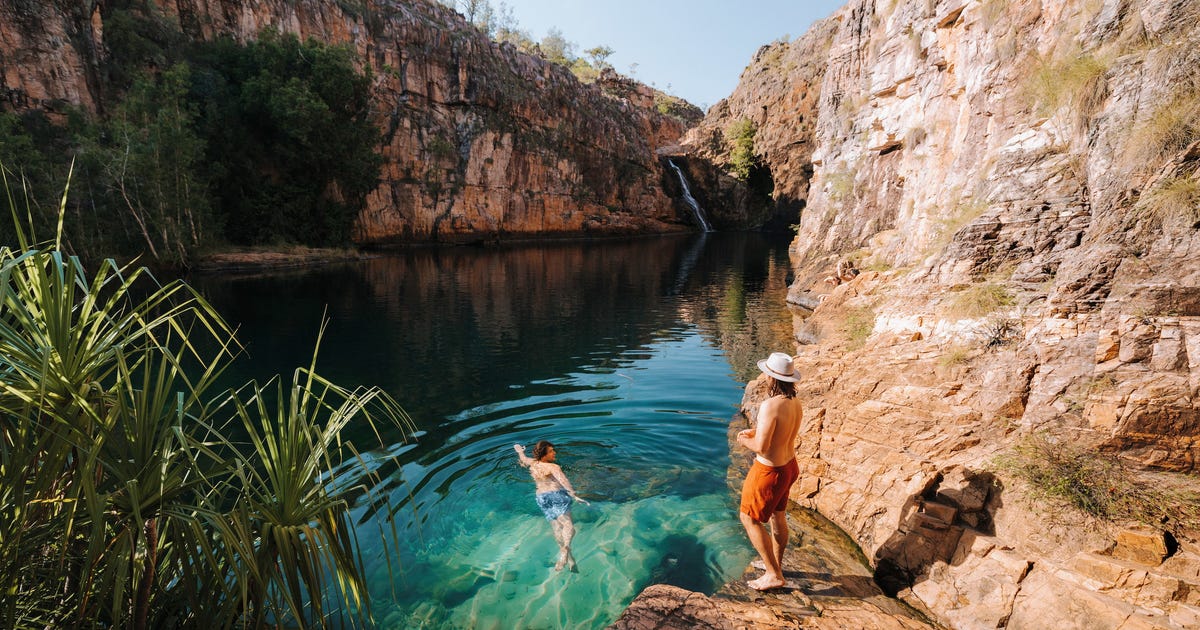Northern Territory adventures promise an unforgettable journey through some of the most spectacular, untouched landscapes on Earth. From the dramatic ochre cliffs of Kings Canyon to the ancient wetlands of Kakadu, every moment in Australia’s Top End pulses with wonder. These adventures are not just about sightseeing—they’re about immersion into a land rich in natural grandeur, cultural heritage, and thrilling encounters. Whether you’re swimming beneath cascading waterfalls in Litchfield National Park or gazing up at the Milky Way over Uluru, the Northern Territory offers a visceral connection to nature and the Dreamtime stories of its First Nations people.
Uluru and Kata Tjuta remain iconic beacons for travelers seeking spiritual awe and geological magnificence. Visitors are often struck by how the light transforms these formations at different times of the day, especially during sunrise and sunset. The Uluru-Kata Tjuta National Park, co-managed by traditional Anangu owners and Parks Australia, provides insight into Tjukurpa—the ancient law that governs the Anangu way of life. Respectful travel here, especially since the 2019 climbing ban, has led to a rise in cultural tourism and storytelling walks that make the experience even more profound.
Further north, the lush floodplains and billabongs of Kakadu National Park become a living classroom in biodiversity. Home to more than 10,000 saltwater crocodiles and over 280 species of birds, it’s a haven for wildlife enthusiasts and photographers alike. Cruise along Yellow Water Billabong with expert guides from Kakadu Tourism, and you might just spot a croc lunging from the water or a rare jabiru stalking through the reeds. In Kakadu, every sound, scent, and sight is a reminder of the deep ecological interconnectedness that defines these Northern Territory adventures.
For those drawn to the thrill of exploration, road trips along the Stuart Highway unveil endless outback panoramas dotted with quirky towns like Daly Waters and Wycliffe Well. Travelers often bunk in outback stations or free camp under the stars, a style of travel strongly promoted by Tourism NT. Along the way, Aboriginal-owned art galleries and community-run cultural centers provide opportunities to purchase authentic art and learn from traditional custodians.
No Northern Territory itinerary is complete without diving into the tranquil beauty of Litchfield National Park. With its swimming holes, magnetic termite mounds, and dramatic waterfalls, it has become a favorite weekend escape for Darwin locals and a must-see for visitors. The park is easily accessible, and swimming is permitted in many areas during the dry season, with rangers conducting regular safety checks to manage crocodile activity.
For night skies, desert festivals, and a sense of freedom that’s hard to match anywhere else on the planet, the Territory delivers. Resources like Australia.com and the Northern Territory Government provide detailed travel guides, safety tips, and updates to ensure a safe, enriching journey through this rugged and breathtaking part of the country.
Wild Encounters in Kakadu National Park
Biodiversity Like No Other
Kakadu National Park spans nearly 20,000 square kilometers, making it Australia’s largest national park and a UNESCO World Heritage site. It boasts over 280 bird species, 117 types of reptiles, and more than 2,000 plant species. The park’s wetlands are home to saltwater crocodiles, with an estimated population of 10,000 roaming its waterways. For those seeking true Northern Territory adventures, Kakadu offers an unparalleled immersion into raw, untamed biodiversity.
Seasonal Wonders of the Wet and Dry
Kakadu’s beauty changes with the seasons. From November to April, the wet season transforms the landscape into a lush paradise with dramatic waterfalls like Jim Jim and Twin Falls in full flow. During the dry season, from May to October, the floodplains recede and reveal rich walking trails and Aboriginal rock art sites. The shifts in weather provide completely different experiences, making Kakadu suitable for multiple visits.
Cultural Significance and Rock Art
Home to the Bininj/Mungguy people for over 65,000 years, Kakadu holds some of the oldest Aboriginal rock art in the world. Ubirr and Nourlangie rock shelters showcase artworks dating back at least 20,000 years. Visitors can take guided tours led by traditional owners who explain the stories and spirituality behind the art, offering an enriching dimension to these Northern Territory adventures.
Wildlife Cruises and Crocodile Encounters
A cruise along Yellow Water Billabong is essential for observing Kakadu’s wildlife. Operated by Kakadu Tourism, these cruises host over 85,000 tourists annually. Spotting crocodiles, sea eagles, jabirus, and buffaloes becomes almost guaranteed. The park’s management enforces strict safety measures, given the high density of saltwater crocodiles—up to 5 per kilometer in some areas.
Visitor Access and Conservation
With over 250,000 visitors annually, the park is committed to balancing tourism with conservation. Access fees range from AUD 25–40 depending on the season. Infrastructure such as walking paths, eco-lodges, and interpretive centers is sustainably developed. The Northern Territory government invests around AUD 10 million annually in park maintenance and cultural preservation, underscoring Kakadu’s role in driving eco-tourism.
Chasing Sunsets at Uluru and Kata Tjuta
The Iconic Uluru Experience
Uluru, standing 348 meters high and with a circumference of 9.4 kilometers, is more than just a monolith—it’s a symbol of Australia. Each year, more than 300,000 people visit this sacred site, primarily to witness its dramatic color changes at sunrise and sunset. These transitions are among the most photographed moments of Northern Territory adventures, with Uluru glowing crimson and orange in the desert light.
Sacred Land and Cultural Depth
Uluru and the nearby Kata Tjuta are spiritually significant to the Anangu people. Climbing Uluru was permanently banned in 2019 in respect of its cultural importance. Instead, visitors can explore the base walk or join ranger-guided tours that include Tjukurpa stories—traditional laws and Dreamtime legends. Around 60% of park rangers in the area are Indigenous, facilitating deeper cultural exchange.
Kata Tjuta’s Mystical Domes
Located 50 kilometers from Uluru, Kata Tjuta (meaning “many heads”) consists of 36 massive rock formations. The tallest dome, Mount Olga, rises to 546 meters. Less crowded than Uluru, Kata Tjuta offers the Valley of the Winds trail, one of the most scenic and demanding walks in the Red Centre. These formations are a crucial part of many Northern Territory adventures that seek solitude and grandeur.
Stargazing in the Red Centre
Uluru-Kata Tjuta National Park has some of the clearest night skies in the world, drawing astrophotography enthusiasts and stargazers. With minimal light pollution and expansive views, it’s possible to see the Milky Way and Southern Cross with the naked eye. Several tours offer telescopic views and Indigenous star lore to enhance the celestial experience.
Eco-Tourism and Park Management
The park spans over 1,325 square kilometers and is jointly managed by Parks Australia and the Anangu traditional owners. It generates approximately AUD 50 million annually in tourism revenue. All visitors pay an entry fee of AUD 38 per adult, valid for three days, contributing to maintenance and cultural programs. Uluru’s inclusion in Northern Territory adventures supports both local communities and long-term sustainability.
Thrills and Tranquility in Litchfield’s Waterfalls
Plunge into Nature’s Pools
Litchfield National Park, just 120 kilometers from Darwin, is renowned for its accessible waterfalls and natural plunge pools. Florence Falls, Wangi Falls, and Buley Rockhole attract over 330,000 visitors annually. With crystal-clear waters and shaded picnic areas, these sites offer a perfect mix of relaxation and adventure, embodying the best of Northern Territory adventures.
Magnetic Termite Mounds and Unique Geology
The park features fascinating magnetic termite mounds, some over 2 meters high and aligned north to south. This alignment minimizes sun exposure, showcasing the termites’ evolutionary adaptation. Additionally, Tabletop Range’s sandstone escarpments provide geological insights dating back 500 million years, appealing to eco-tourists and scientists alike.
Walking Trails and Lookouts
Litchfield offers a variety of trails ranging from easy 1.5 km circuits to more challenging 11 km treks like the Tabletop Track. Many trails include elevated lookouts that provide panoramic views of the falls and dense monsoon forests. Signage throughout the park helps visitors engage with the landscape’s natural and cultural significance.
Adventure Sports and Swimming Safety
Swimming is permitted in many areas, but park authorities conduct regular checks for crocodiles, especially during the wet season. In recent years, over AUD 2 million has been invested in improving safety infrastructure, including viewing platforms, safety railings, and upgraded paths. Litchfield is also popular for 4WD routes, especially Reynolds River Track, which opens during the dry season.
Park Access and Entry Data
Entry to Litchfield is free, making it an accessible choice for families and budget travelers. The Northern Territory government estimates that visitors to Litchfield contribute approximately AUD 45 million to the local economy each year. For many tourists, it’s a must-visit site in their Northern Territory adventures, due to its close proximity to Darwin and year-round appeal.
Outback Road Trips and Remote Beauty
Exploring the Stuart Highway
The Stuart Highway, stretching 2,834 kilometers from Darwin to Port Augusta, is a lifeline through the heart of the Territory. Road trippers along this route encounter key towns like Katherine, Tennant Creek, and Alice Springs. Over 100,000 vehicles traverse the highway each year, many of them caravans and campervans engaged in classic Northern Territory adventures.
Camping and Station Stays
Outback road trips offer unique accommodation options—from free roadside camping sites to luxury station stays like Curtin Springs or Kings Creek. According to Tourism NT, around 60% of Territory road trippers prefer camping over hotels. This allows for deeper connection with the vast landscapes and iconic red dirt terrain.
Remote Fuel and Safety Essentials
Fuel stops can be up to 300 kilometers apart. Roadhouses such as Daly Waters, Renner Springs, and Barrow Creek serve as essential lifelines. The Northern Territory government advises travelers to carry at least 20 liters of spare fuel and 20 liters of water per person. Satellite phones and EPIRBs (Emergency Position Indicating Radio Beacons) are recommended for deeper remote travel.
Wildlife and Landscape Diversity
Outback travelers often witness dingoes, brumbies, wedge-tailed eagles, and even camels. Australia has over one million wild camels, many of which roam the Territory. Roadkill risks are real—approximately 4,000 incidents are reported each year—so driving at dawn or dusk requires caution.
Tourism Impact and Community Engagement
Outback road tourism contributes approximately AUD 250 million annually to the Territory’s economy. Programs like the “Million Dollar Road Trip” campaign in 2023 aimed to boost rural visitation. These efforts help sustain remote towns and Aboriginal communities while enriching the scope of Northern Territory adventures.




